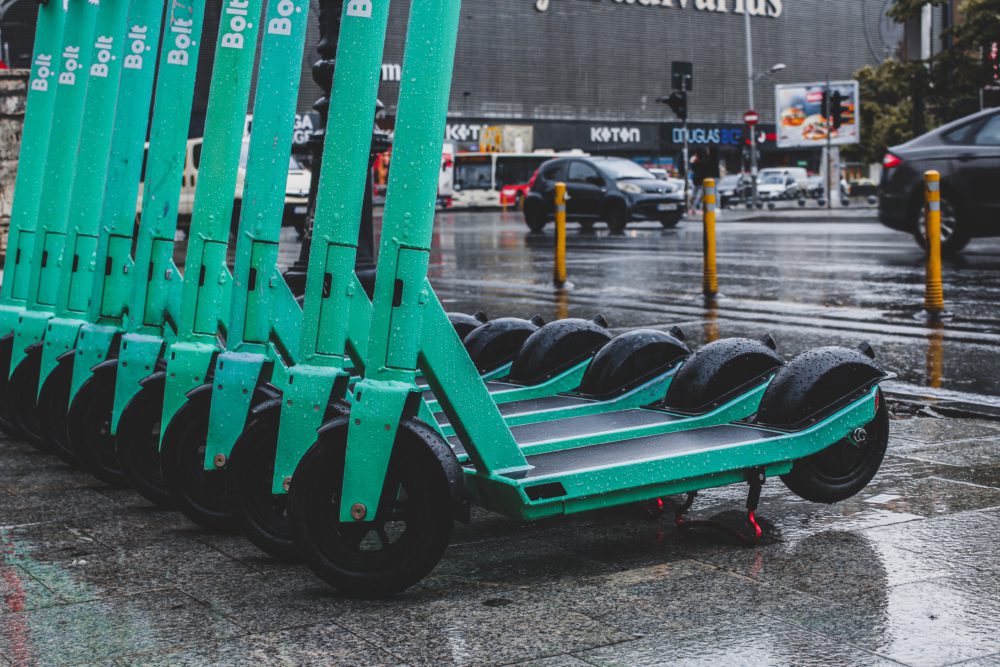The past few years have been unlike any others, and as the dust settles on the ‘new normal’ we’re starting to see just how much lasting change has been made.
One major way we’ve changed as a nation is how we use the roads. The latest MOT data shows that annual average mileage now stands around 5,400 miles per year – down 24% on pre-pandemic levels. That’s 1,700 miles a year less per person than in 2019 – the equivalent of a round-trip from Land’s End to John O’ Groats.
So how did we become a nation of low mileage drivers? Well, it’s no surprise that many people reconsidered their driving habits during lockdown. Those on traditional annual policies spent much of the year looking out the window at a car they were forbidden from using, but still paying insurance for. Go figure. The world of work changed for a lot of us, and we didn’t have as much use for our cars.
When you throw in the cost of living crisis which has gripped the nation this year, it’s clear that driving is also now more expensive. Fuel prices, claims inflation and a semiconductor shortage have driven up the cost of cars, and as a result we found that two-thirds of all drivers had taken some action to decrease their motoring costs.
We’re living in a flexible-mobility world now. There are far more options available for getting around than there have been historically, from on-demand mobility options such as Santander and Lime bikes, to improved public transport. For many in urban areas, cars aren’t the primary mode of transport anymore – just part of a mix.

We also recently passed the milestone of one million plug-in electric cars on our roads. And with the deadline for new petrol and diesel sales just around the corner, it seems that many are making the jump to a cleaner and greener alternative already.
These changes are happening across the board, but are perhaps more common with younger people.
Millennials and Gen Z (broadly those under 35 years old) are being hit harder by a reduction in living standards, with over three-quarters taking some action to cut their driving expenses this year. Under 35s are twice as likely to use public transport or walk more. They’re also 50% more likely to consider an electric vehicle, and five times more likely to use a car-sharing scheme than average.
Under 35s are twice as likely to use public transport or walk more, 50% more likely to consider an electric vehicle, and five times more likely to use a car-sharing scheme than average.
When we look at the car industry, there’s a clear theme in how they’re developing vehicles for the future. The UK Government’s ban on new petrol and diesel cars from 2030 has seen many manufacturers shift towards electric. With fewer semiconductors to go around, a number of carmakers did away with petrol and diesel production entirely.
Manufacturers are also responding when it comes to safety. 85% of accidents on our roads are caused by human error, so they’re introducing a lot more technology to keep us safe, like Automated Lane Keeping Systems and automatic braking. Despite this, a recent survey found that only a third of drivers who have adaptive cruise control ever use it – and less than a third who have speed limiters use them.
From 2026, every new car on our road will have connected capabilities – which means they’ll be able to interact with the environment around them by sending and receiving information in the cloud. Estimates also suggest that by 2030, one in every five miles driven on UK roads will be automated. That means that for 20% of all journeys, there’ll be no hands on the steering wheel.
Technology is advancing at a rapid rate, yet there’s a reluctance for many to engage with it – despite the clear safety benefits.
At By Miles, we’ve been thinking long and hard about this challenge.
How can we educate our members about safer driving? How can we encourage members to switch on safety features? How do we continue to offer the best value possible for those who drive less?
We strongly believe that usage-based insurance holds many of the answers.
Today, traditional insurers rely heavily on demographic and historical data – much of which can’t be easily updated or improved. Traditional insurance is reactive – you answer a set of questions and the insurer guesses how risky you’re likely to be based on the historical behaviour of others who answered the same questions like you did.
Traditional insurance is also entirely reactive, in that it only comes into play when an accident has already happened. And while a lifeboat is great to have, it’s not going to help you swerve the iceberg.
Traditional insurance is entirely reactive, in that it only comes into play when an accident has already happened. And while a lifeboat is great to have, it’s not going to help you swerve the iceberg.
So what’s the alternative?
Telematics policies have typically been used as a ‘stick’, to punish the worst drivers with punitive measures and higher premiums. But we’ve always wanted to provide a ‘carrot’ instead. We reward our members for not driving their cars – the safest action a driver can take – by not charging them when they aren’t using the car.
We want to go even further, and turn insurance from something reactive to something interactive. A product that doesn’t just reward people for making self choices – but actually empowers those decisions.
What we’re planning, and trialling, is introducing incentives for our members to nudge them into safer behaviours. For example, we’ll be able to suggest our members park their car in a safer location, or turn on self-driving mode – and then discount their per-mile rate in real-time.
Our vision is to be able to give drivers all the information they need to make smart choices – from rewarding them for not driving in poor weather, to giving them a discount for taking a route that generally has fewer accidents on it. We’ll use these nudges to incentivise drivers and reduce claims in an interactive way – without forcing anyone into a certain type of behaviour.
We’ve always been of the opinion that not driving your car is the safest thing you can do as a driver, which is why we charge by the mile. In the near future, ‘not driving’ your car will mean more than parking it up – you could be behind the wheel, but with full self-driving mode on. In this case, the manufacturer would be liable for the miles driven – so why would we charge you a premium?
While the rest of the industry is waiting for regulation to tell them what to do – we’re listening to drivers and building solutions today that are ready for tomorrow.




